A Little Landscaping
I was going to title this post “You Know You’re An Adult When You Blog About Landscaping” but deemed it too long.
This summer Brad and I had the misfortune of dealing with these pesky little buggers called bag worms. They invaded 3 out of our 6 arborvitaes. The bag worms basically eat the trees alive, defoliating them. And if the bag worm infestation is paired with other stresses, like the ridiculous drought we had last summer, they can kill the tree. Which is what happened to the arborvitae on the south side of our house. It wasn’t totally dead, but there wasn’t much hope for it so we decided to remove it and give it a proper burial in a dumpster. May it rest in peace.
The other arborvitae next to it also suffered an infestation. We treated it multiple times so we’re hoping it bounces back in the spring. (It looks worse now than what it does in this photo.)
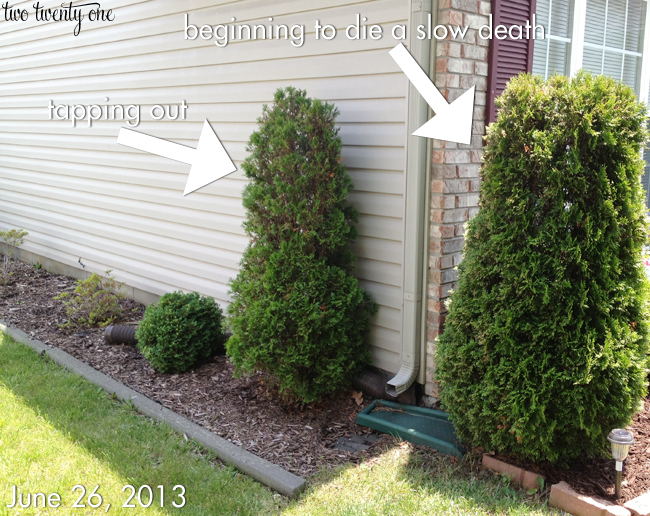
Brad dresses as fashionable as possible when he’s working in the lawn. Back off, ladies. He’s mine.
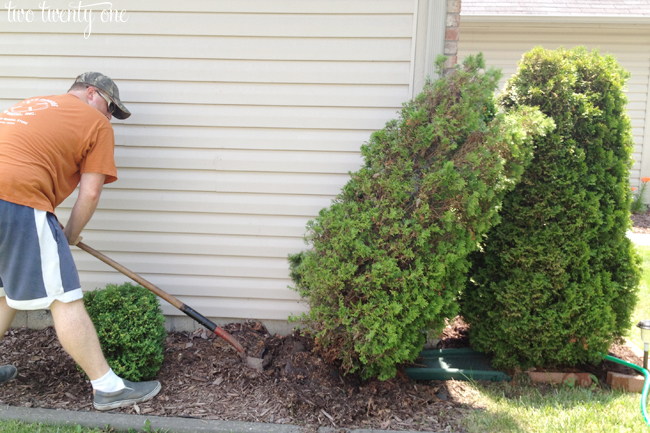
A couple years ago I bought two hydrangeas from the clearance sections of two different stores, which isn’t anything new. All of our landscaping plants and flowers were either given to us or purchased from plant clearance sections. I shop the clearance sections for three reasons.
1. It’s cheaper than paying full price (duh).
2. If I happen to kill the plant I can say “Meh, at least I didn’t pay full price”.
3. I like underdogs.
I initially planted the hydrangeas on the west side of our house where they got afternoon/evening sun. After two years and very little growth, I determined it was time to relocate them. I noticed that our neighbors with healthy hydrangeas planted theirs on the north sides of their homes. So I decided I’d give the north side a shot.
We dug up the hydrangeas this weekend and moved them to the north side of our house. Note: This photo was taken in 2011– I obviously favor the south side of our house because this was the most recent photo I have of the north side.
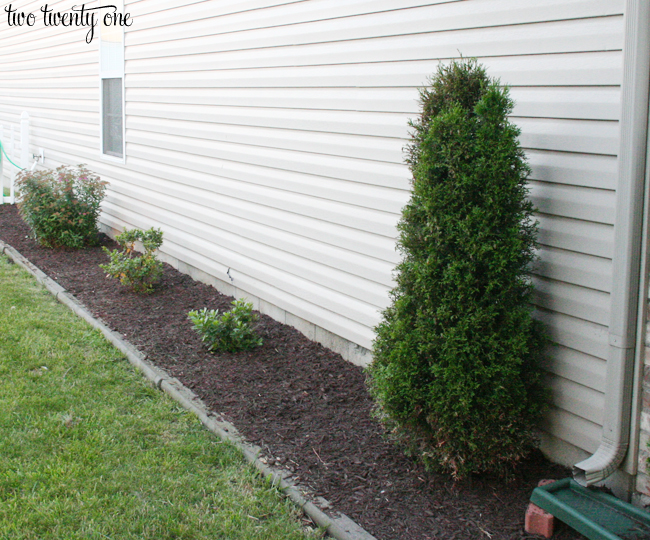
We put the bigger hydrangea where the now-dead arborvitae used to reside.
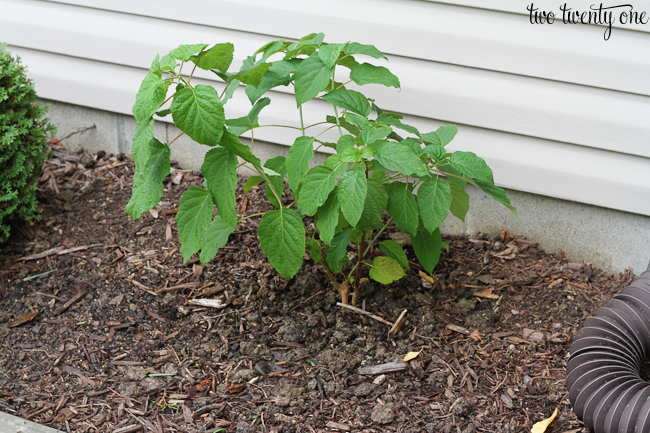
And we put the littler hydrangea in between my two clearance section azaleas.
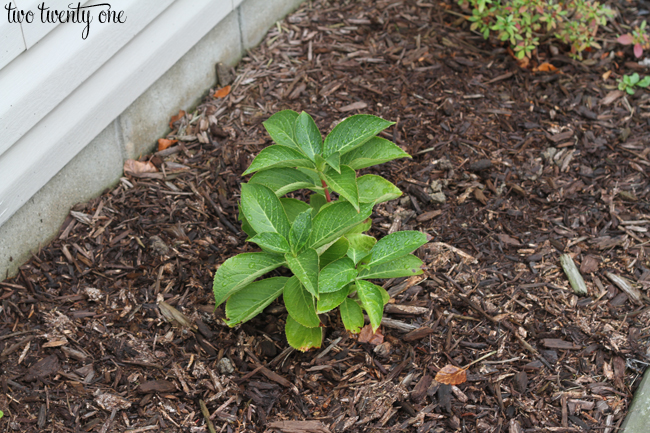
Note: Don’t transplant your hydrangeas until late fall when the leaves fall off. I didn’t find this out until after I already transplanted them. Whoopsies. Again, if they die I didn’t pay much for them.
Fingers crossed the hydrangeas do better in their new location.
While we’re on the topic of landscaping, when I was scouring my computer for photos of the north side of our house I stumbled upon a photo of our front flower bed, circa spring of 2011. The previous owners did this landscaping job, which possibly looked good to them when they planted everything in 2009 when the plants were smaller, but look at the overcrowded hostas smushed up against the house and the large random spot at the bottom of the photo.
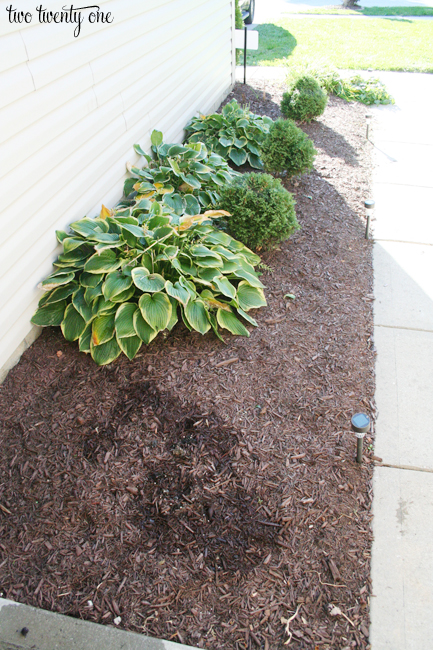
That fall, I relocated the smaller, round shrubs (Brad wouldn’t let me toss them, but their days are numbered) to the north side of the house, and I moved the hostas to the middle of the flower bed. Here’s how it looked this summer. Doesn’t it look ten times better and not nearly as crowded?
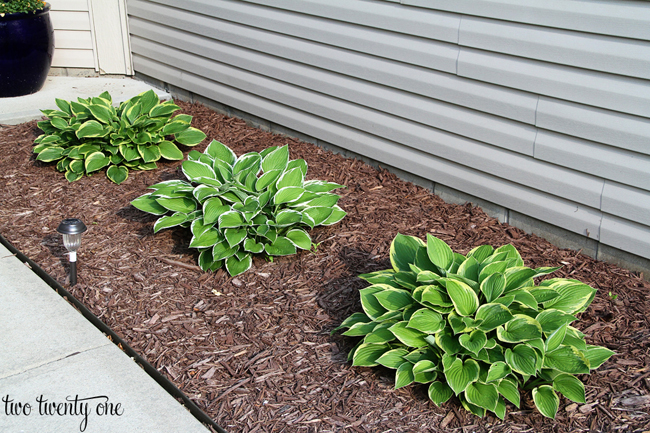
In other landscaping news, Brad and I want to plant a tree in our backyard this fall. Our choices are: October Glory Maple, Sugar Maple, or Saucer Magnolia. Any suggestions?
Have you ever had to deal with bag worms?
Do you grow hydrangeas? What’s your secret for getting them to grow?
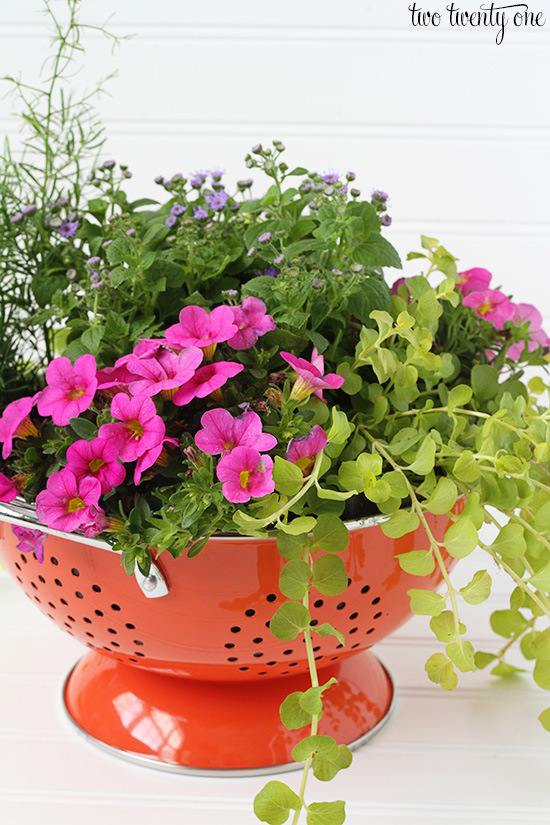



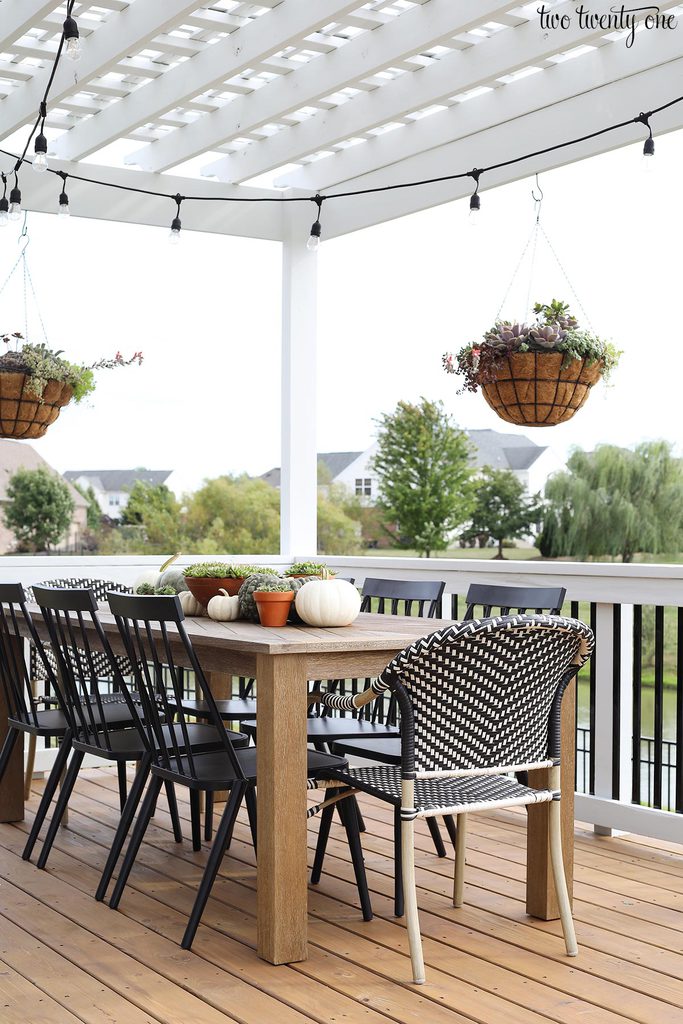
Hydrangeas: fertilize and water!
Sugar Maple! Maple syrup is paleo, dontcha know?
Hello from a fellow IU Phi Mu! (Class of 2003 :))
We had bag worms in our pecan in Dallas. They’re icky. Our garden center sold parasitic wasps in the spring (sold as wasp eggs on little pieces of paper) that will kill the bag worms and leave you alone. (I’m not a stinging insect fan, but these apparently don’t have stingers…) Also, debulking by cutting off affected parts of the plant will help.
I had a hydrangea that also didn’t grow well. Turns out it got too much sun. Yours should be happier on the north face of the house, and I hope they grow big and happy! Don’t forget that they LOVE water. Mine looked pitiful after transplanting, but the next spring it recovered well. 🙂
Best of luck for a happy garden! Come check out our blog – we’re doing a series on Thrifty Gardening. 🙂
goodnotperfect.com
I very badly want some hydrangeas at our next house, but I know nothing about them and normally thrive with low-maintenance plants. I don’t want to kill them.
what direction does your backyard face? (ie. North, South…)
– October Glory Maple (fall colour: deep red / reddish purple) grows about 16m high and 11m wide – it’s a variety of Red Maple, does best in full sun
– Red Maple 16m high and 15m wide (fall colour: yellow orange / bright red), does best in full sun
– Saucer Magnolia 6m high and 3m wide (considered more of smaller size tree), only flowers for a very short time but is beautiful when it does, fall colour is bronze and it’s ok in partial shade
hope that helps!
I’ve had hydrangeas that have survived the Texas heat for 3 years now. They don’t grow as large as they probably should because they get too much sun, but I just make sure they get plenty of water and if their leaves start to droop a bit I know I’ve been slacking on the watering! I fertilize about 2x a month in the spring and early summer and that seems to do well with them!
Our house came with the world’s biggest hydrangea. It was at least 15 years old and took up a space 6 ft x 10 ft. We never did anything but trim it back. My husband cut it down a few weeks ago. I couldn’t watch.
We had bag worms on our two blue spruces a couple years ago. We picked the bags off (with pruning shears) and dropped them in a cup of bleach. It took a couple rounds of picking to make sure we got them all, but the trees recovered just fine. The worms heated up incredibly though…who new bagworms and bleach created an exothermic reaction??
Any Maple! They are absolutely my favorite tree!!!!
I desperately want hydrangeas but our house is not laid out so that we have a good place to plant them. I am constantly trying to figure out a place to plant them that would work. So far, no dice. Dealing with former homeowners landscaping is always a treat. We ripped out 40 year old shrubs from in front of our house this summer, I can’t imagine that they were ever attractive.
Boo for worms! I hope your trees (shrubs?) bounce back! I have not become an “adult” yet– we’re in a townhouse, so the HOA does the landscaping– but I’m paying close attention to these landscape posts for when I have to tackle our own yard in the near future! Hope you’re having a great week, Chelsea!
~Abby =)
Ooo Ooo This is totally my field! Okay so I love a Magnolia but I prefer a Jane Magnolia. BUT if you would like a nice shade tree I would go with either an October Glory Red Maple or a Red Sunset Red Maple. If you go the maple route google images to see what they look like in the fall. That should be the deciding factor … IMHO anyway. I also know how to treat bag worms – call me sometime! I have hydrangeas, wouldn’t consider myself a grower of them, more of I don’t kill them hehehe
You always make landscaping look so easy! I like to pay full price for plants and then kill them.
My mother has THE most amazing hydrangeas…tons of varieties and colors and they really look like something out of a magazine. Although, one reason hers are amazing is because she lives on Cape Cod which seems to be quite the popular area for hydrangeas. They love being near the ocean. They also love sun but not all day..they prefer sun most of the day with afternoon shade…particularly if you’re in a very warm area (if in very, very hot locale..is prob better to do a place with only a bit of sun or even filtered sun). Dead-heading is very important and if you transplant, make sure you do it either in the spring (earlier is better) or in the fall. To change the color of your blooms, you can either add an acid or a base to the soil and one helpful thing is to do a soil test around your hydrangea to see how acidic or basic the soil is so you can know what to add. A great hydrangea for beginners is the Endless Summer variety. Those are very easy to find in the northeast..not sure about your area but they have the typical blue color that is so well associated with hydrangeas. Removing deadwood is also important but just make sure it really is deadwood..you should be able to tell because the wood will snap easily. Anything that has a slight bend to it should be kept. Put some mulch or compost around the root ball and make sure to water the whole hydrangea and not just the roots and put in an area that drains well because, as my mom says, “they don’t like getting their feet wet.” Good luck!
PS-the shrubs that you moved from in front of the hostas. They look like boxwoods. Are they? Hard to tell but if they are..don’t trash them!!!!
previously had several complications considering the survey shit, but today it payed back :))